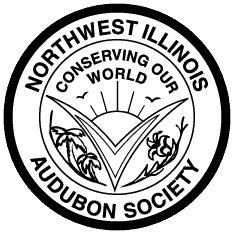Family Activity
Celebrate the theme of World Migratory Bird Day 2023
Celebrate the theme of World Migratory Bird Day 2023 about water by exploring aquatic ecosystems. All living organisms, including YOU, require water.
Put on some boots, bring some nets and containers, and of course, bring binoculars. Walk around aquatic habitats, such as near streams and creeks and search for creatures that rely on water. There are many bird species than tend to be near or on water, such as Sandhill Cranes, Red-winged Blackbirds, American White Pelicans, Great Blue Herons, and many species of waterfowl. Many migratory warblers and sparrows require water for survival on their long journeys. These birds use the habitat for shelter, food, and for their nests. See if you can observe the behavior of these birds by keeping distant and quiet. You may get a chance to see their nests and what they use for food. Water is a great place that attracts insects that many birds can eat.
When you have an opportunity, safely collect water samples from the creek (ensure an adult is with you and be careful in and near the water). What kind of organisms can you find in the water? Many invertebrates live in water including insects, their larvae, and crayfish. You may also find vertebrates in the water like amphibians and fish or mammals that live nearby.
When you return home, consider how you use water. Think about how often you use water or waste water and learn ways to conserve it, such as turning off the faucet while brushing teeth and not putting toxic materials down the drain.
Learn more about World Migratory Bird Day at migratorybirdday.org.
Let’s Get Ready for the Special Children’s Nature Walk
Can you guess which bird is identified below? Which of these can we find? Get out your bird books or go online and see if you can bring the identity of these birds with you when you come with us on the Special Children’s Nature Walk at Oakdale on May 24. These are birds we are likely to see that morning:
Bird A
- I have red on my wings.
- I like to be near water.
Bird B
- I like to live in the open, away from the trees.
- I like to eat mealworms.
Bird C
- I have a rosy-red breast.
- I just come through Oakdale on migration.
Bird D
- I have a dark gray back and red-brick breast.
- I like to eat worms.
Bird E
- I have a solid black cap, white cheeks and black throat.
- I am little and friendly.
Bird F
- I have a black head and upperparts, a white wing bar and bright orange underparts.
- I love to eat oranges!
How about this creature we might see?
- My eight simple eyes help me see to the front, behind, below, above and to the sides. I have eight legs too.
- I eat lots of insects, many of which carry diseases or are harmful to plants. I’m really not such a bad fellow.
Or we might find this one:
- I am able to breathe and drink through my moist skin.
- I have two webbed feet, four legs, two eyes and a backbone.
- I’m green and live in and out of water.
Backyard Feeding Tips to Attract the Baltimore Oriole
Jelly is one of the most effective oriole foods you can offer. Smooth grape jelly is best, but the birds will also take orange marmalade or red cherry, strawberry or raspberry jellies. Offer jelly in small dishes, in a hollow orange rind or smeared on an orange half and the orioles won’t be able to leave it alone. Do not, however, offer sugar free jellies; it is the sugar that gives the birds the necessary energy and calories they need. Ideally, organic jellies are best.
As the weather begins to warm up head out to your favorite trail to enjoy the spring weather and nature.
If the wind is strong, go outside and fly kites with your friends and family! If you do not own a kite already, then go to the store and purchase one before finding an open area outside to fly the kites in. Compete against your friends to see who can fly their kite the highest and longest!
An entertaining planting craft that you can do as a family is to make your own grass cups! All you need are cups, construction paper, scissors, tape, soil, and grass seed. First, start by cutting out silly faces from the construction paper, and tape them onto the cup. Put soil inside the cup, then plant the seeds inside. Water your grass daily, and watch it grow!
Fly like a Bird and Learn about Migration
Ask yourself: Why do birds fly over our town? Where do you think they are going and why? Birds may fly around for several reasons: to find a new home, to find food, to find water, or to seek shelter and safety. Then learn about migration, which is a longer distance flight. Spring is a time for many birds to migrate. Why do birds migrate? They might be looking for better food availability, breeding areas to find a mate, or better climate.
Learn about migration by playing migration games with your family. Have several family members or friends pretend to be a flock of migrating birds – perhaps in a “V” formation that geese do. Take turns being the leader of the V while the others make two angled lines. Follow the leader without bumping into each other and keeping the V formation – it’s tricky unless you communicate! Birds call to signal each other – you can make this fun by having the lead bird call back things like, “You getting too tired, Jack?” or “How are you doing, Jill?” or by making bird calls!

